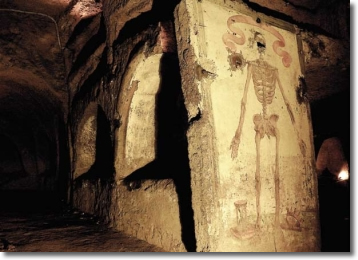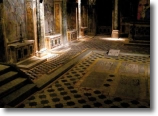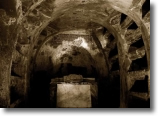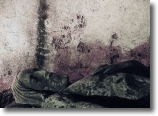
...Initially built at the entrance of the cemetery of St. Gaudioso, and modernized in the seventeenth century. Altars on sides are separated by striated pillars... the tribune is flanked by two columns of green Calabria marble ... in the curve of the apse run three arched niches.
...Under the central altar and the other altars are 10 bodies of Martyrs, taken in Naples in 1616 by the dominican Fr. Timoteo Casella, bishop of Marsico and buried here during a solemn procession.
The catacomb of St. Gaudioso is on the right of altar... first of all you can see the cell of St. Gaudioso with an altar in the middle and in the bottom a large arcosolia and underneath the burial, around you'll see a large mosaic depicting the life of the Saint... above all an inscription... In front of the visitor there is a similar cell with a big arcosolia and a cross of jewels, underneath there is a burial... maybe of Saint Nostriano; under the vault there is "the head of Christ", an excellent piece of work of the fifth century; it attracts the attention of artists and archaeologists.


